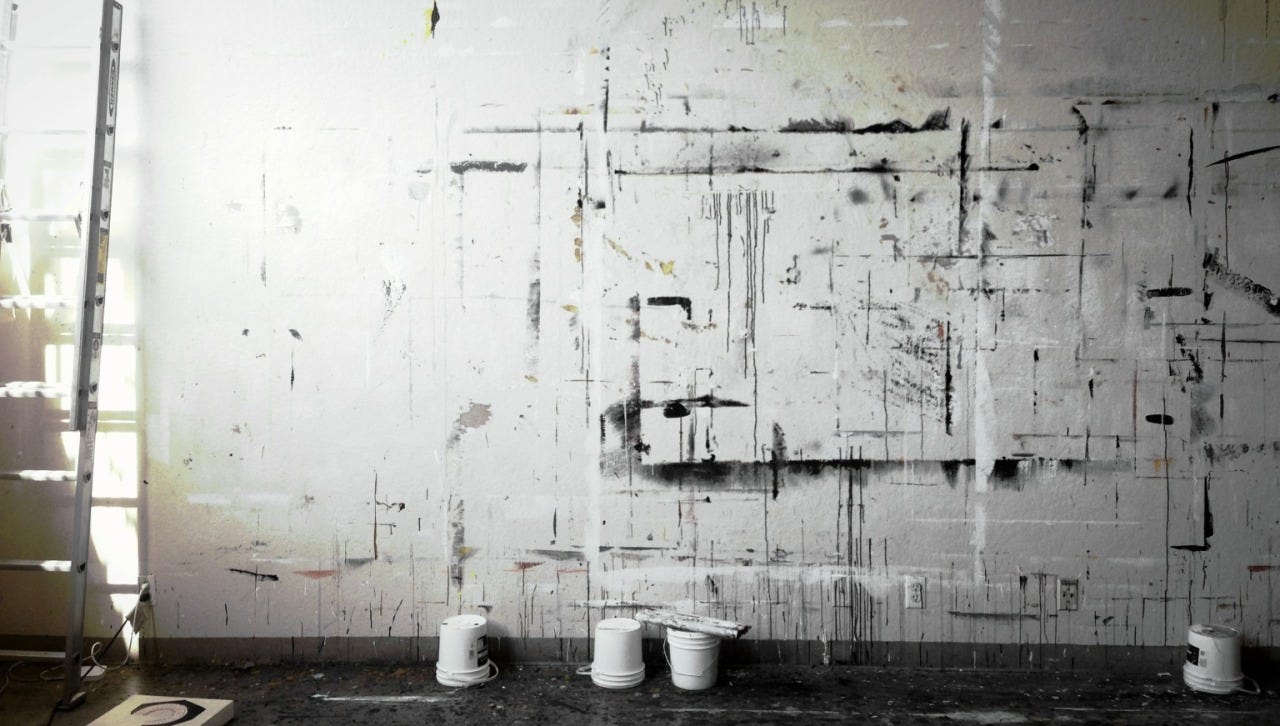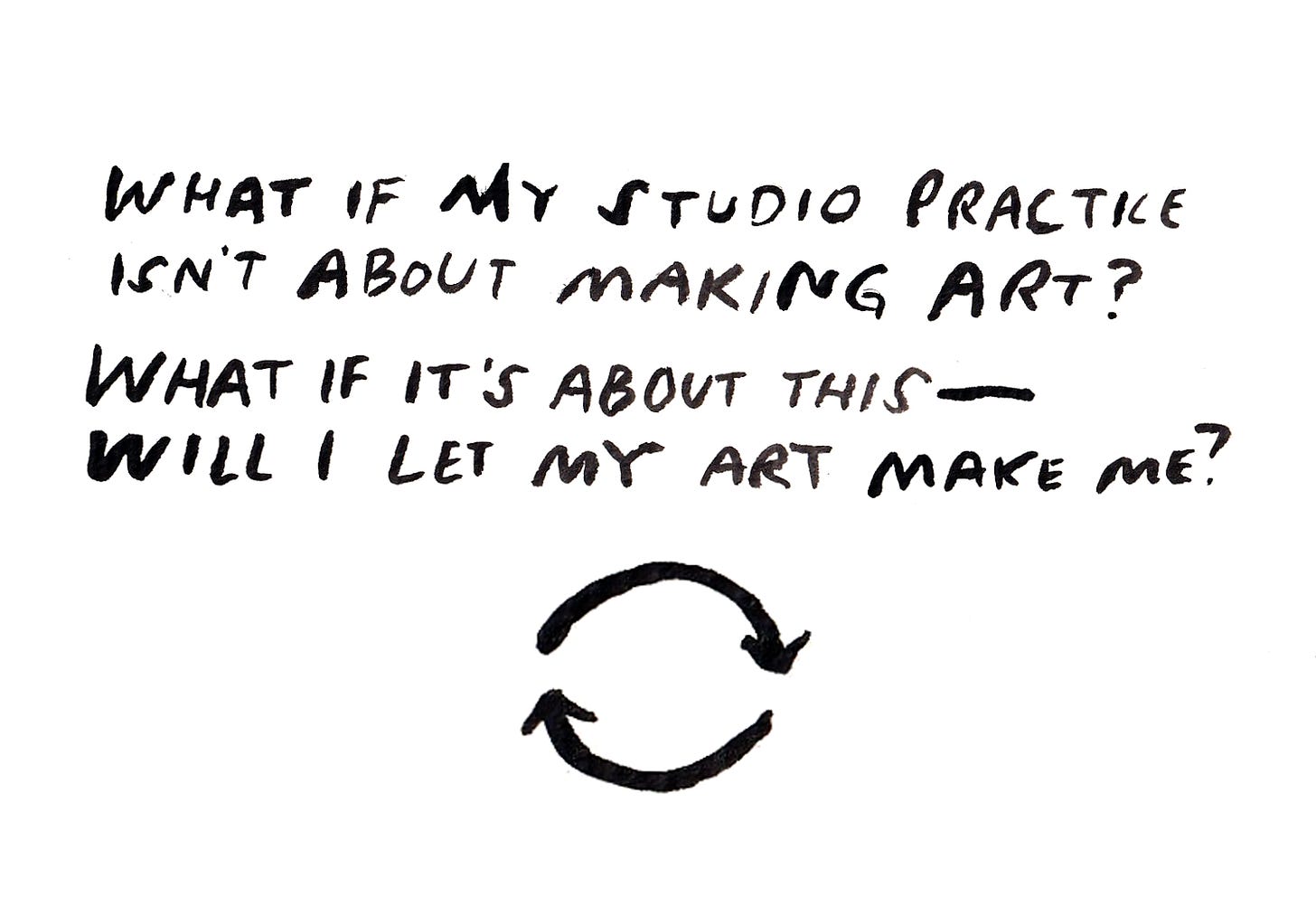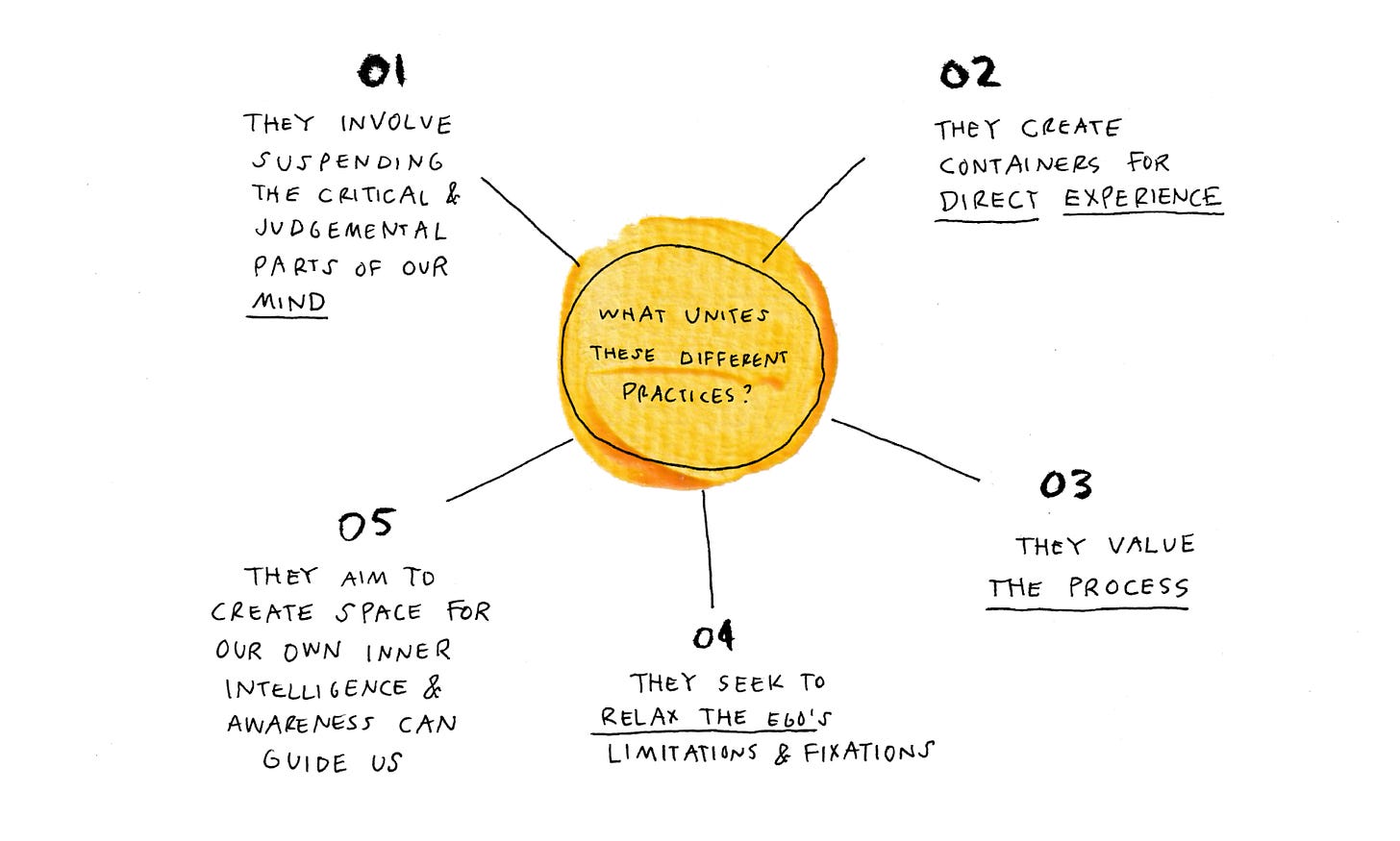Day 57: where is your White Room? 🌙
with Elle Luna
FRIENDS!
Have I told you lately I’m proud of you? I really am! I see you showing up, opening up, sharing (even the things you don’t like!!), and it is BEAUTIFUL. I am amazed at your individual and collective efforts.
Let’s take a beat. Inhale. Exhale. Relax your jaw.
Check in with yourself:
Acknowledge yourself for how far you’ve come. What are you proud of?
How is your project growing or evolving?
How are YOU growing or evolving?
How did it feel to give yourself permission last week?
If you’ve dropped off, here’s your invitation to jump back in any time – if your project wasn’t a fit (it happens), show up, experiment, and see what happens.
→ You have one more day to submit your art for our Day 60 Reel.
Our theme this week is “The River Below the River: Four Landscapes Toward Wholeness” with Elle Luna.
In 2014, inspired by a class taught by designer Michael Bierut’s 100 Day Project workshop at Yale, Elle and friends decide to do their own projects. They picked a start date, chose the hashtag #The100DayProject to organize their posts, and made and shared art every day for 100 days. People noticed. They wanted to join too. The next year, it wasn’t just Elle and friends. It feels strange to introduce Elle as a guest contributor—we wouldn’t be here without her—so I won’t. Instead I’ll say thank you for passing the baton, and I know I’m not the only one who is thrilled to have you back. A whole week of art and wisdom from Elle?! What a gift. Here she is:
Hi Friends, Elle here.
Thirteen years ago, I began to have a recurring dream about a white room. Tall white walls, cement floors, and warehouse windows running the length of the room. In my dream, I would sit on the floor and be filled with an incredible sense of peace and calm. And then one day, a friend asked—
I hadn't.
But that question called me to an adventure that you can read all about here.
In short, I found the white room from my dreams. It was a warehouse for rent in San Francisco. And on my first night there, confused and vulnerable, I asked the room that had called me to it—
Why am I here?
And as clear as day, the room replied,
I had painted throughout childhood and college, but somewhere along the way I just sort of forgot about it. And now, today, all these years later, I'm still painting in the white room from my dreams. Its address has changed; its essential role in my life has not.
As the mythologist Joseph Campbell writes—
"You must have a room, or a certain hour or so a day, where you don't know what was in the newspapers that morning, you don't know who your friends are, you don't know what you owe anybody, you don't know what anybody owes to you. This is a place where you can simply experience and bring forth what you are and what you might be."
One day I told my dream to a friend, and she asked,
I had never heard that before, but it made sense. Because parts of me did die—could die!—in my studio.
A photo of my studio wall, May 2013.
There, on a working wall with thick white cardstock and a brush in hand, I could push off from the known world and discover other landscapes within myself. And every time I came back to shore, I felt enriched—not always comforted or better, but more settled in my bones, my being—by what I had experienced. My paintings became soul mirrors.
And this led me to a question—
This is not a new inquiry.
Painters paint for the same reason Zen Buddhists sit Zazen and Sufis whirl and Jungians analyze dreams and Surrealists do automatic writing. All of these traditions and practices are different doorways to the same room.
Later, I attended a holotropic breathwork workshop led by Dr. Stanislav Grof (founder of Grof breathwork with his late wife Christina Grof) and his wife Brigitte Grof. In a ballroom in downtown Denver, 250 people breathed rapidly and deeply to evocative music, moving into non-ordinary states of consciousness. There we touched on the same phenomena I find in painting—that same dropping of the veil, that same surrender of control, and that same opening to something much, much larger, something that feels like an invitation towards wholeness.
As Dr. Clarissa Pinkola Estés calls it, they were accessing "the river below the river." Or as T.S. Eliot writes, it's the "music heard so deeply that it is not heard at all. But you are the music, while the music lasts."
Stan Grof came up with the term 'holotropic’ by combining two Greek words: 'holos' (meaning 'whole') and 'trepein' (meaning to move toward'). The term literally translates to 'moving toward wholeness.’ Similar to sunflowers, which follow the sun because they are heliotropic, Grof believes we naturally turn towards that which has healing potential for our lives.
We'll start tomorrow with a framework Dr. Grof developed after sitting through countless sessions with patients and seeing that people often return to their unfinished birth material in sessions. The framework has four fundamental patterns that not only shape birth but also appear throughout our lives as psychological and creative patterns. We'll explore each of the 4 parts over the next 4 days, then wrap up the week with Self Care on Friday and Creative Play on Saturday.
But for today, I invite you to reflect:
Today, spend some time in your sacred space.
If it feels right, you might even explore talking to it out loud or maybe even offering it some sort of small token of appreciation. If you do, please tag me in it (@elleluna) so I can follow along.
Warmly,
Elle
P.S. If you’re interested in non-ordinary states, join us for a Grof Holotropic Breathwork workshop in Hawai’i the first weekend of June, where we'll dive deeper into these transformative experiences. Grab your spot here.















